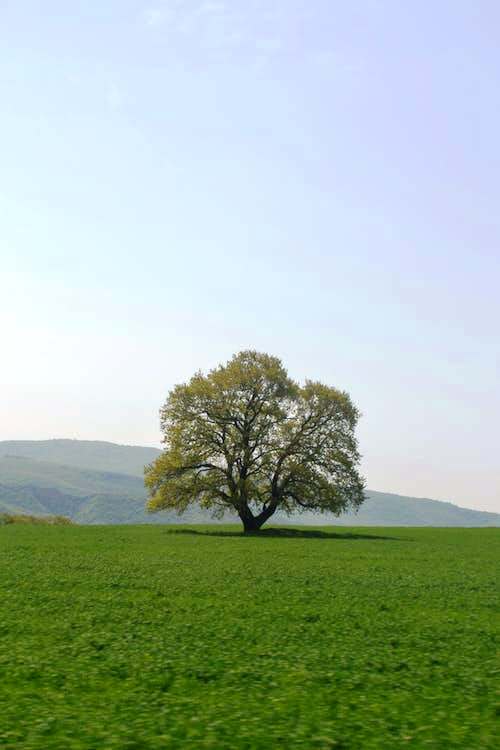How to Prune a Goblet Tree
Summary
Step 1: First winter: pull down the scion’s leader
Step 2: First spring: cut back the 3 future carpenters
Step 3: Second winter: cut back the 3 branches
Step 4: Second growing season: pinch the regrowth
Step 5: Third winter: continue to form carpenters
Step 6: Fourth winter: repeat the same operations as before
The goblet shape is applied to orchard trees to facilitate fruit picking from the ground or with a double ladder. It consists of cutting the leader and spreading 5 to 6 main branches around the trunk to give the crown a goblet shape.
This training pruning requires 4 to 5 years from a scion.
The height of the trunk is generally 60 cm (sometimes 30 cm) to allow access to the trunk to pass the mower, for example.
The goblet requires a minimum distance of 3 to 5 m from other trees, depending on the rootstock’s vigor and variety.
The small goblets formed on the rootstock of low vigor require staking during the first 3 years.
A goblet is an easy-to-manage form for the homeowner, often applied to apple, peach, cherry, plum, and prune trees. Orchards producing stone fruits (apricot, peach, nectarine, cherry) are traditionally trained in the goblet shape because it allows the fruit to color well and to aerate the branch, which is less prone to diseases.
1. First winter: cut back the scion
The goblet is formed from a scion, i.e., a tree that has had one year of growth after the grafting done near the ground.
Good to know: the scion forms a vertical axis measuring from 0,60 to 1,50 m, sometimes provided with anticipates (side shoots developed at the same time as the axis), particularly with the stone fruits. It is sold between November and March, often bare-rooted, preserved in a gauge, or with the roots wrapped in wet peat. Some garden centers do not offer scions but already formed and more expensive trees.
During the winter, cut the scion back to 60 to 80 cm from the ground, 0.5 cm above a bud. Make a beveled cut with sharp, spirit-disinfected pruning shears.
In the case of a scion without anticipation:
Select 2 other buds spaced about 20 and 40 cm from the end bud, well distributed around the trunk (making an angle of 120 ° with the previous one).
Then disbud the other buds.
With a scion provided with anticipates:
Selected 3 of them well distributed as above that you cut back by 2/3.
The others are either eliminated in the process or cut back to be eliminated during the summer. This technique gives a nice open angle to the retained anticipates.
2. First spring: pull down the 3 future shoots
The 3 retained buds give birth to 3 shoots. When these reach 40-50 cm in length, place a circle in the center of the crown to force them to flare, or use flexible ties attached to the trunk to lower them without risking injury to the bark.
3. Second winter: cut back the 3 branches
Cut back (i.e., severely cut) the 3 branches to keep only one-third of their length, taking care to cut above the bud located under the branch (outer eye).
It is possible to keep 2 lower branches to bring the tree to fruit more quickly. They will be removed in 3 years to complete the goblet shape.
4. Second growing season: pinch out the regrowth
Each of the 3 branches has produced about 2 new shoots at its tip.
Pinch these shoots as they develop to encourage them to branch into mixed branches, woody branches, or twigs.
5. Third winter: continue to form the carpenters

Cut back half of the current year’s shoots of the 6 branches that will serve as carpenters.
Remove the vigorous branches at their base that compete with the frameworks’ extensions.
The underlying branches with inclined growth are shortened slightly to form sub carpentieres.
Vertical shoots growing on top of the carpenters are removed.
6. Fourth winter: repeat the same operations as before
Cut back half of the year’s shoots.
Remove the vigorous branches at their base that compete with the extensions of the frameworks.
Remove the vertical branches growing on top of the framework.
The goblet is completed, and the following operations are limited, except for the peach tree, to remove the branches that are crossing, decayed, dead, that grow towards the center of the tree and the suckers.
In peach trees, which need regular and strict pruning to prevent the fruiting body from moving away from the trunk, start the fruiting pruning (hook pruning).
Equipment to form a goblet tree
Pruning shears
Electric pruning shears
Pneumatic pruning shears





